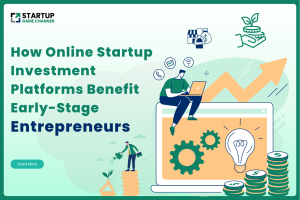Seed funding is usually considered one of the significant milestones for any startup. To catch the potential interest of investors, your pitch deck should be visually appealing, concise, and engaging. It provides information to investors that your startup will grow and be worthwhile in the foreseeable future.
This blog post will outline the critical elements investors expect to see in your pitch that makes it successful.
Identify Problems and Propose Solutions
Every successful startup is based around a real problem that needs solving. Investors should be able to see your business solve a significant and painful problem. First, define what the problem is clearly to have an impact on your target audience.
Present the solution after clearly defining the problem. Investors will want to understand how your product or service uniquely solves this problem in the market. They will seek features, benefits, and differences that help explain what your solution uniquely is versus its competition. Make sure that your value proposition is clear and compelling.
Show Market Opportunity
For investors, there should be a huge and addressable market for your product or service. Your pitch should show data for market size, growth potential, and the target audience. Point out favorable industry trends and customer behaviors that signal heavy demand for what your startup will offer by establishing clearer chances of success.
Investors are looking for startups that are going to be huge over time. The more you can demonstrate that your market is either expanding or underserved, the more attractive your startup will be. Long-term market potential will make an investor believe you are going to scale.
Outline Your Business Model
A good business model is required to validate your case with investors that your startup can actually drive revenue. Be clear about how your startup will make money. Whether through direct sales, subscriptions, or other revenue streams, investors need to know your plan for generating consistent income.
Include your pricing strategy and explain why it’s competitive. If you have multiple revenue streams, outline them and explain how each will contribute to your overall revenue. Clear financial expectations will show investors that your business is viable and has a path to profitability.
Show Traction
Investors are more likely to fund a startup that has already demonstrated traction. Whether it’s early customers, partnerships, or revenue, show what you’ve achieved. Even if you don’t yet have significant profits, any signs of progress will make your startup more appealing.
If you have customer testimonials, user growth metrics, or early sales data, include these in your pitch. Traction helps build credibility and shows that you can execute your plan. It also reassures investors that there is demand for your solution.
Highlight Your Team’s Strengths
There needs to be more than a great idea. Investors want to know that the team behind the startup has the skills, experience, and commitment to succeed. Your team is one of the most critical factors in their decision-making process.
Introduce the key members of your team and highlight their relevant experience. Show why your team is uniquely qualified to build and grow the business. If you have advisors or mentors, mention them as well—they can add credibility and expertise to your startup.
Outline Financial Projections
Investors want to know that you have a well-thought-out financial plan for the future. Give projections for the next 3 to 5 years outlining income, expenses, and profits. This lets them know that you are aware of the financial dynamics of your business and have a clear direction toward profitability.
Be honest and realistic with your projections. Investors are wary of overly optimistic forecasts, so make sure your numbers reflect the realities of your market and business. Show how the seed funding will be used to help you reach critical milestones and grow your business.
Competitive Landscape
Investors will want to know who your competitors are and how you will outcompete them. A competitive analysis is important in demonstrating that you understand the market and have a clear strategy for effectively competing with your rivals.
Identify direct and indirect competitors and clearly differentiate your product from the others. Whether it is through a more competitive price or superior features, highlighting unique advantages will reassure investors you can capture market share in a competitive landscape.
Vision for Growth
A startup with great ambition interests investors. While it is necessary to focus on the now, you must also have a very long-term vision. The investors will be impressed when you show where your startup will be in 3 to 5 years and how you have shaped the industry with your growth.
A clear vision will show investors that you’re thinking about the future and have a roadmap for growth. Explain how you will scale, enter a new market, or expand your product line. A clear, inspiring vision will give investors a sense of the wider potential for your business and a high return on their investment.
The Ask: Be Clear About What You Need
Another very important part of your startup seed funding pitch deck is your “ask.” This means you should be clear about the amount of cash you are raising and how much equity you are giving up in return. This will give the investors clarity on the terms of their investment and its potential value. Investors need to understand precisely what you need and what they will get in return.
The goals for using the funding should also be clearly stated. It could be product development, marketing, or even hiring. It should be quite clear how this investment is going to help the startup grow. Investors feel much safer about getting a return with transparent goals.
Risk Mitigation
No investment is without risk, and investors need to see that you’re aware of the dangers your startup faces and have strategies in place to address them. This could include market risks, financial risks, or operational challenges.
Be honest about the risks and show how you plan to manage them. This can be achieved by establishing various income streams or major partners and creating contingency plans. You can demonstrate maturity, foresight, and good handling of risks by showing the investors that you have identified the potential risks and that you have a plan on how they would be managed.
Conclusion
In conclusion, your startup seed funding pitch deck is a chance to make lasting impressions on investors. You can do this by defining and explaining the problem and the solution, showing market potential, and making a strong business case for investment by presenting a solid business model. It will be important to emphasize traction, capable team, and realistic financial projections in order to gain seed funding and attract investor confidence.
With the right approach, your pitch can capture the attention of any investor willing to fuel the growth and success of your startup.







